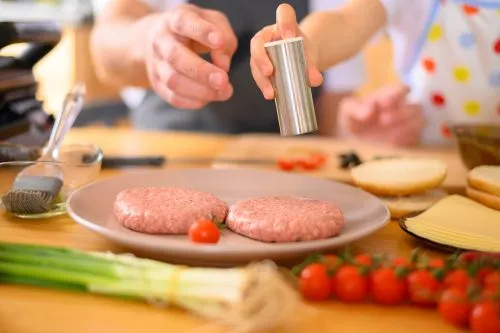1304

The European Comparison Program (ECP) was initiated in the 1970s as part of the International Comparison Program (ICP) and aims to compare the real terms of gross domestic product (GDP) - both in level and structure.
In 1999, the ECP underwent a reform, resulting in the production of annual results for all European countries included in the program.
To make comparisons of GDP, its components, and price levels across the European Union and each member state, purchasing power parities (PPP) are calculated. These indicators eliminate the effects of price level differences between countries.
When member states' data on GDP components are converted into a common currency using PPP, the data are evaluated at the same price level and only reflect differences in the volume of goods and services purchased by the compared countries.
The European Comparison Program (ECP) involves the participation of European Union (EU) member states, European Free Trade Association (EFTA) member countries (Iceland, Norway, and Switzerland), candidate countries (Albania, Montenegro, North Macedonia, Serbia, Turkey, Bosnia and Herzegovina).
The results of the ECP are calculated and disseminated twice a year by Eurostat, the statistical office of the European Union, in June and December.
This press release presents the results for the year 2022, calculated by Eurostat in June 2023, based on consumer prices collected by participating countries for a common set of comparable goods and services, selected to represent consumption patterns in the 36 European countries, as well as data on GDP expenditure components and other basic information transmitted in accordance with Regulation (EC) No 1445/2007.
Price level indices for final consumption by households compared to the EU average:
- Price level indices express how many units of the same currency are needed to purchase an identical volume of goods and services in different countries, for each group of goods and services. In 2022, for the goods and services included in final consumption, 100 euros were paid in the European Union, 146 euros in Ireland, and 58 euros in Romania.
- The lowest price levels for goods and services included in the final consumption of households among member states were recorded in Romania in 2022, being 42% below the EU average, followed by Bulgaria (41% below the EU average) and Poland (38% below the EU average).
- In 2022, among the EU member states, the highest price levels for the final consumption of households were observed in Ireland (46% above the EU average), followed by Denmark (45% above the EU average), Luxembourg (37% above the EU average), and Finland (27% above the EU average).
Price level indices for main groups of goods and services:
- According to Eurostat's press release, Romania has the lowest price level among EU member states for the "Food and non-alcoholic beverages" group (72%), followed by Poland (73%), while Denmark and Luxembourg have the highest price levels for this group of products (121%).
- Bulgaria has the lowest price levels for the "Alcoholic beverages and tobacco" (66%), "Clothing and footwear" (80%), and "Housing, water, electricity, gas, and other fuels" (37%) groups, followed by Poland for the "Alcoholic beverages and tobacco" (73%) and "Housing, water, electricity, gas, and other fuels" (40%) groups.
- Denmark has the highest price levels for products in the "Clothing and footwear" group (133%), and Ireland is the most expensive country in the EU for products in the "Alcoholic beverages and tobacco" (216%) and "Housing, water, electricity, gas, and other fuels" (212%) groups.
Romania has the lowest pricelevels for the "Furniture, household equipment, and routine maintenance of the house" group (70%) among EU countries, along with Bulgaria (71%).
- Hungary remains the cheapest EU member state for the "Transport" (72%) and "Recreation and culture" (64%) groups, while Bulgaria has the lowest price levels for the "Accommodation and restaurant services" group (51%).
- Luxembourg has the highest price levels for "Furniture, household equipment, and routine maintenance of the house" (126%) among member states.
Regarding the "Transport" group, Denmark (127%) and Sweden (126%) are the most expensive countries in the EU. Denmark stands out from the rest of the member states as the most expensive country for the "Recreation and culture" group (141%) and for accommodation and restaurant services (156%).
Volume indices of Gross Domestic Product per capita based on Purchasing Power Parities:
- Romania, together with Portugal and Hungary, has the same volume index value of GDP per capita based on PPP and stands at 77% compared to the EU average.
- The lowest GDP per capita value in 2022 was recorded in Bulgaria, 41% below the EU average.
- Luxembourg had the highest GDP per capita level in the European Union, surpassing the EU average by 161%. This can be partially explained by the large number of foreign citizens who have a significant share in the country's total workforce and contribute to GDP but are not part of the resident population.





